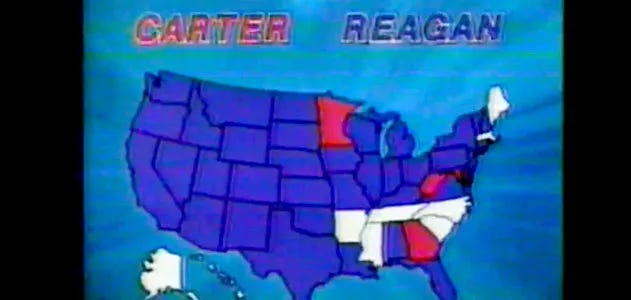Why Are Republicans Red and Democrats Blue?
The news media changed the colors of the two parties before the 2000 election
Europeans are often confused about the colors associated with our political parties. And for good reason. We now think of the blue states as Democratic strongholds and the red states as the home of Republicans. But prior to the 2000 election, it was reversed.
The reason was simple: In Europe, notably Great Britain, the more conservative parties were blue, and the more liberal parties were red. When television began covering presidential races, they simply adopted the European tradition.

In 2000, that changed. Some in the news networks claimed the change followed experiments on what showed best on television. They said that since Republicans typically win so much of the heartland, the lighter red color made the map easier to look at.
In an article in Smithsonian Magazine from November 2, 2020, the reason for the switch seemed to be more political. “For years, both parties would do red and blue maps, but they always made the other guys red,” said Chuck Todd, then political director and chief White House correspondent for NBC News. “During the Cold War, who wanted to be red?”
Mitchel Stephens, a New York University professor of journalism, wrote that, especially during the Cold War that ended in 1990, “red was a term of derision” associated with the Soviet Union and Communist China. “There’s a movie named Reds,” said the professor.
“For years, both parties would do red and blue maps, but they always made the other guys red,” said Chuck Todd, then political director and chief White House correspondent for NBC News. “During the Cold War, who wanted to be red?”
The attitude about red may be accurate, but why did the networks decide to label the Republicans red and the Democrats blue? Ronald Reagan had successfully made a campaign of the Democrats being “soft on communism,” which made the color red a particularly uncomfortable hue for the Democrats. Jeanne Kirkpatrick, Reagan’s strong-minded Ambassador to the United Nations, had switched from the Democratic party to the Republican party. In her memorable speech to the 1980 Republican convention, she said the “San Francisco Democrats blame America first.” Reagan himself said being soft on communism was once a political charge, “but now it is a Democratic campaign promise.”
In short, the Republican charge of Democrats being “soft on communism” made the color red particularly uncomfortable. Vice-President Al Gore’s campaign pushed hard for the change in the 2000 presidential race against Texas Governor George W. Bush to change colors. The election of 2000 remained undecided for nearly a month as the Florida votes swung back and forth between Gore and Bush as the famous “hanging chad” was debated by the news media and eventually the Supreme Court. The fact that the new colored maps featuring Democrats as blue and Republicans as red were a nightly feature on the news for the entire month of November perhaps contributed to the change sticking.
I’ll let you in on a little secret you may not have heard. The major television networks lean towards the Democrats, and so granting their request to change colors happened without much fanfare. Though at the time, some Republicans complained. Clark Benson, in the article RED STATE BLUES: Did I Miss That Memo? wrote that red was the color associated with socialism, and the Democrats were clearly more socialist-leaning than the Republicans. Besides, he wrote, traditionally, blue had been associated with the North in the Civil War, which was Republican, and before that with the Federalists.
While one can easily see the discomfort caused by the color red during the Cold War, most Americans under the age of 50 barely remember it. The Soviet Union broke up 33 years ago, and Putin’s Russia is not associated with communist red like it was back in the post-World War II days.
So, the color difference between the two parties has taken on different meanings. The experts at color-production firm Pantone see colors as having meanings for brands and product marketing.
Blue is stable and associated with depth, expertise, trust, and stability. Finance and technology companies use blue to inspire confidence among depositors and online users. Conversely, Red is more volatile, reflecting passion, action, courage, energy, danger, and even wrath. Many automotive and travel companies use red to connote excitement and energy.
In the current populist environment where voters rally against the status quo, being associated with the more staid and establishment blue might present an unwelcome brand for the Democrats, and red, a color associated with change, may be more politically beneficial for Republicans than they would have thought back in the days of Ronald Reagan.
Either way, with the main fundraising arm of the Democrats named “ActBlue” and the main fundraising arm of the Republicans named “WinRed,” things are not likely to change any time soon. But, after the next election, whether you feel blue or see red will still depend on whether your candidate won or lost.
The article cited: When Republicans Were Blue and Democrats Were Red, Smithsonian Magazine, November 2, 2020 (https://www.smithsonianmag.com/history/when-republicans-were-blue-and-democrats-were-red-104176297/)


